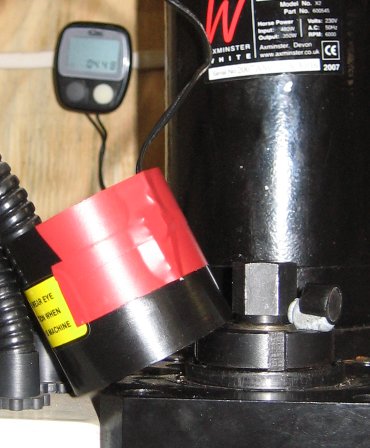As I have a variable speed millling machine without a digital readout (its an Axminster SIEG X2) and wanted a bit more control at the hundreds-of-RPM level than I could get by listening to the pitch of the machine or watching the chuck, some technology was required…
The answer was simple and cheap: use a cheap cycle computer that can read RPM (I got a new one for under a fiver off ebay). I carefully dismantled the sensor to expose the reed switch inside, which I taped to the outside of the cover for the top end of the spindle on the X2. I attached the magnet that normally fixes to the cycle wheel to the top of the spindle with a blob of blue-tack so that it ran close to the cover. Thats it! I suppose a better attachment could be achieved than blue-tack but it works fine at the relatively low spindle speeds I am interested in and I just remove the magnet afterwards.

Ingenious, if it works! how high can it measure the rpm and does it seem accurate/stable at high speeds? I would at least use epoxy putty on the magnet tho!
http://www.instructables.com/id/Tachometer-made-from-a-bicycle-speedometer-cycloc/
It does work!
I don’t generally attempt high speeds; the main reason for fitting this was for milling and fly-cutting at only up to about 500RPM. I’m assuming it will work best at the kinds of rotational speeds typical of a bike wheel, though…